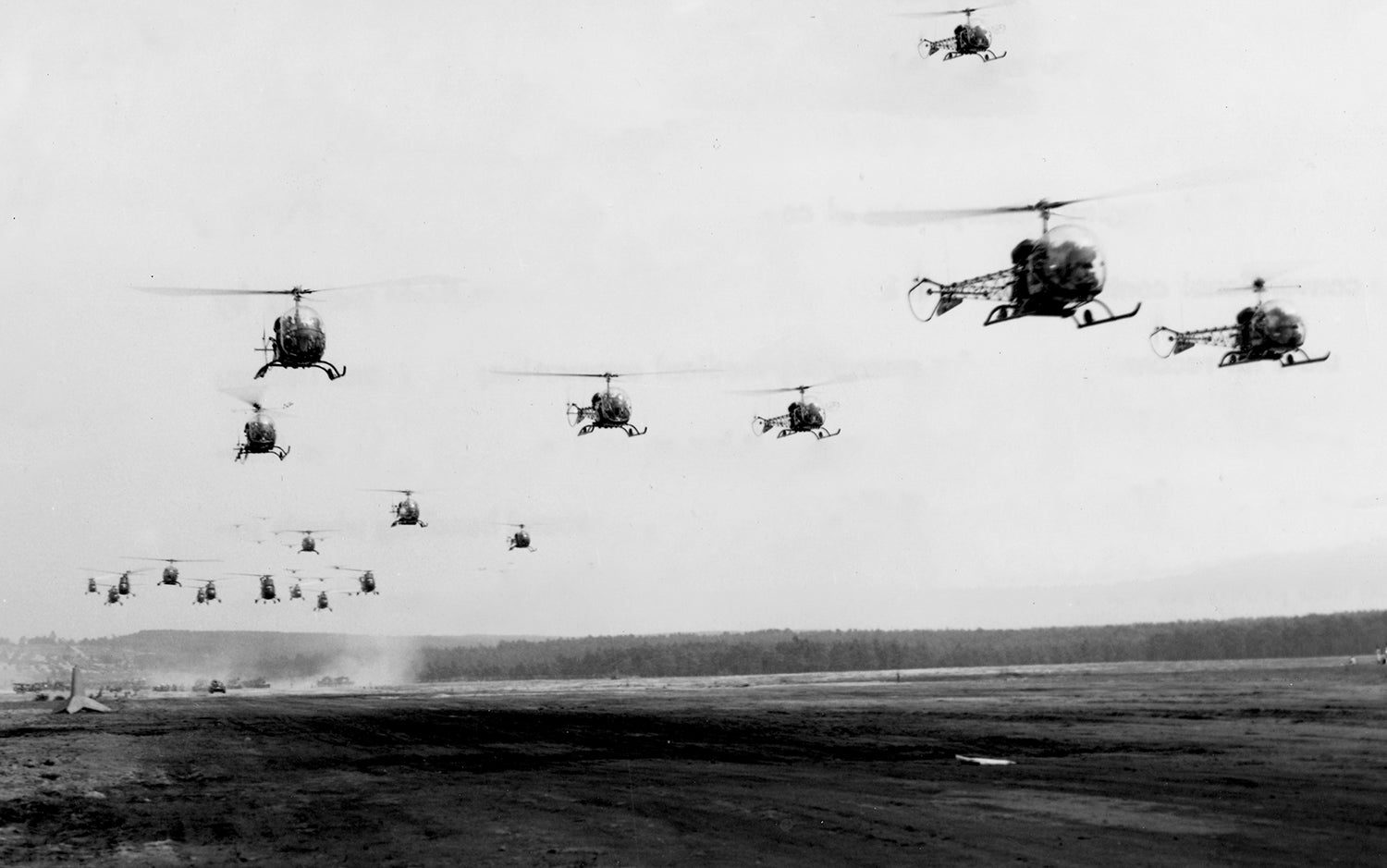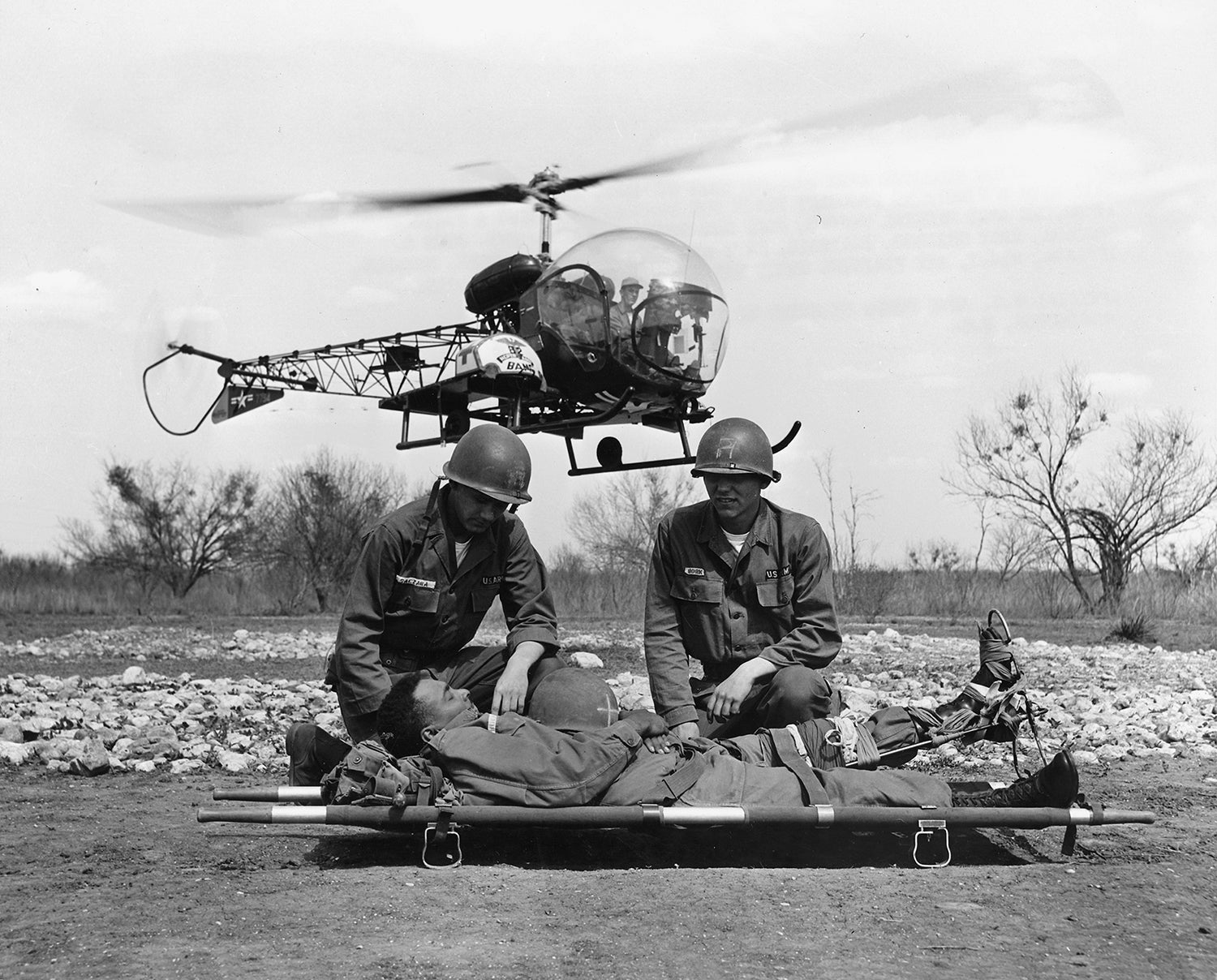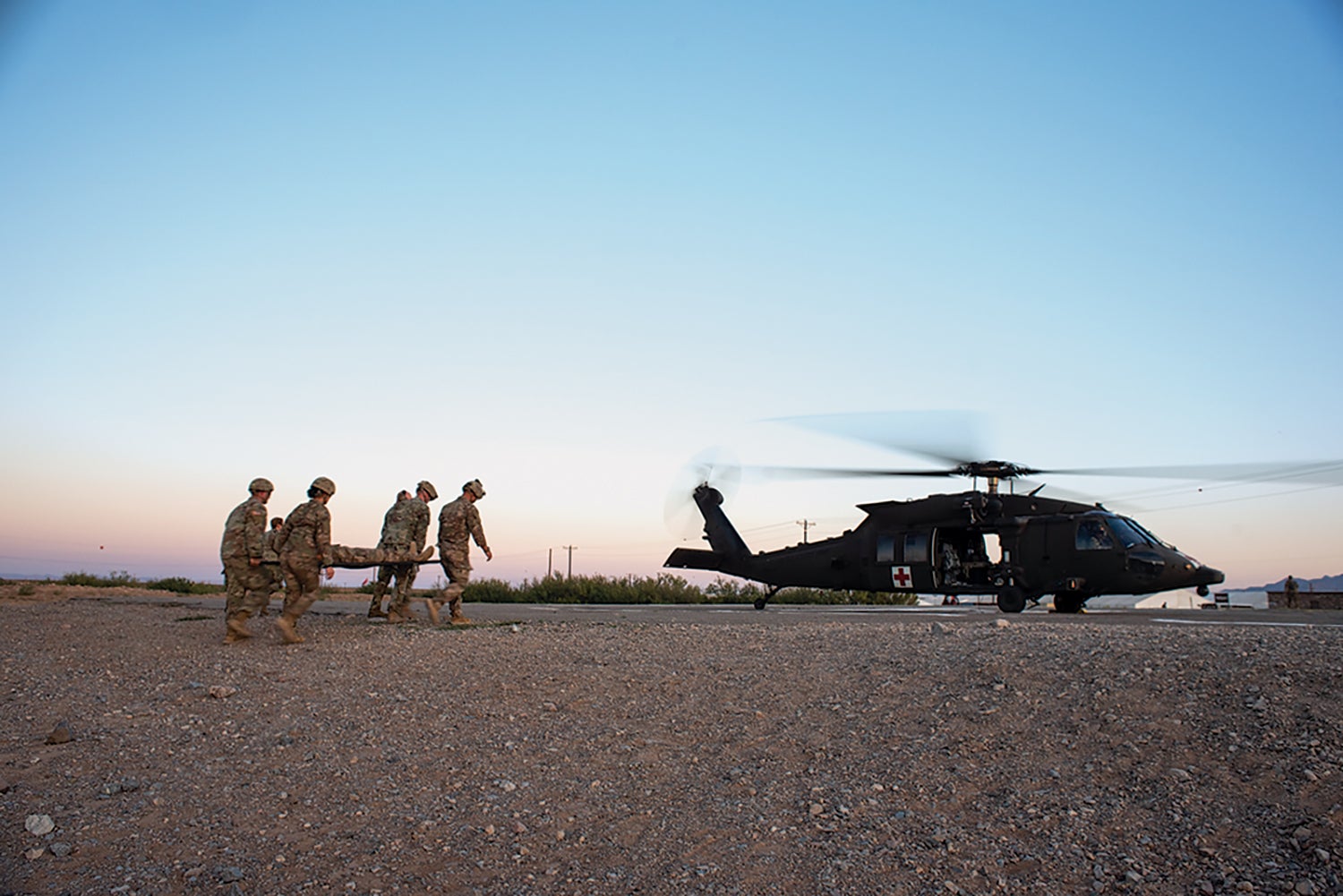From Korea and Vietnam to Afghanistan and Iraq, Army medical evacuation crews have gone above and beyond for wounded soldiers on the battlefield for decades.
They’ve faced the dangers of combat, pushed limits and pioneered advances in combat casualty care. Staffed with two pilots, a crew chief and a medic, they’re known as “Dustoff” crews, always ready to fly into harm’s way when soldiers need them the most.
Many have earned awards for risking their lives to save troops on the ground, and have worked to improve their skills to save even more lives than ever. They have been in high demand for almost two decades in Afghanistan and Iraq, ferrying thousands of wounded troops out of the fight and saving their lives.
As the Army prepares to face a near-peer adversary and a more dangerous and austere battlefield, the service is looking for ways to extend its reach into the fight with next-generation aircraft that can fly faster and farther—and continue building crews that can conduct the critical medevac mission in any environment.
In the Beginning
While the use of helicopters to evacuate wounded troops had rudimentary beginnings in World War II, the mission didn’t truly take off until the Korean War.
The Army’s first aerial medical evacuation missions took place in January 1951, when four helicopter detachments were assigned to the Eighth U.S. Army surgeon during the Korean War, according to the Army. Dubbed the “Angel of Mercy” by soldiers on the ground, the aviators used the H-13 Sioux, a single-engine, single-rotor light helicopter, to transport about 18,000 of the war’s 23,000 casualties to forward-deployed mobile Army surgical hospitals, according to the Army.
The service’s first purely medical aviation unit, the 49th Medical Detachment (Air Ambulance), was created in November 1952.
A decade later, in 1962, Maj. Charles L. Kelly, commander of the 57th Medical Company, started to use “Dustoff” as his call sign. Soon, it was recognized by soldiers on the ground—allies and enemies alike—as the sign that help was on its way.
Call signs were changed regularly during the war for security reasons, but “Dustoff” remained. By the end of the war, almost all medevac units had adopted the term.
“It just kind of stuck,” retired Col. Merle Snyder, a medevac pilot who arrived in Vietnam in 1968, said during a panel discussion featuring former and current medevac pilots at the Library of Congress in Washington, D.C., in September. “It’s become so well known that the Army’s never really gotten rid of it.”
Dustoff crews evacuated American, Vietnamese and allied forces and rescued almost 900,000 sick and wounded by the end of the war. They flew day and night, regardless of weather, terrain and combat conditions—and faced a 1-in-3 chance of being killed or wounded on the job.
‘Reason for Serving’
“It’s a lot of work followed by sheer terror,” Snyder said, describing his service during Vietnam as a life-changing experience. “It gave me reason for serving.”
In December 1968, Maj. Douglas E. Moore served as a commander of an ambulance helicopter unit near Trung Lap, Vietnam. Early one morning, he was notified of casualties in need of evacuation.
As Moore approached the site, illumination rounds gave away the silhouette of his aircraft. Despite being a target, he landed the helicopter and waited for all eight patients to board before taking off again.
As he took off, the aircraft took hits from gunfire.
“And then something hit me, and my head flew back,” Moore said. He didn’t know it at the time, but a bullet had gone through his helmet and knocked him backwards.
“It hit me so hard my co-pilot said I threw the stick out of his hands, too, and I jammed the pedal all the way to the floor,” Moore said.
Despite his injury, Moore managed to get the aircraft under control with the help of his co-pilot and get to safety.
During two tours in Vietnam, Moore flew more than 1,800 combat missions and evacuated more than 2,700 patients; he recovered three American prisoners of war from the North Vietnamese; and in between tours, he helped organize a unit in Japan that transported more than 63,000 casualties in a two-year period.
“It’s something I felt proud of all my life,” Moore, now a retired colonel, said of his service.
Snyder said he received a few weeks of medical training and learned some flying skills before being sent to Vietnam nearly 50 years ago, but the on-the-job learning curve was steep.
“We sort of pioneered without training,” Snyder said. Dustoff pilots had to learn not only to fly at night in the jungle, but also to land in small, tight spaces. “We learned because we did it; because of the mission necessity to get from one place to another.”
Snyder flew more than 1,300 missions and evacuated more than 3,200 patients in Vietnam. He is recognized as one of the Army’s most respected medevac pilots.
Both Snyder and Moore went on to have Army careers as aviators, commanders and senior staff officers, and later were inducted into the DUSTOFF Association Hall of Fame.
The Korea and Vietnam-era crew members paved the way for aeromedical evacuation units, military and civilian, that are used today.
Significant Advancements
Five decades after the war in Vietnam, the Army has made significant advancements in training, equipment and combat casualty care—largely shaped by almost 20 years of conflict in Iraq and Afghanistan.
The casualty survival rate in Iraq and Afghanistan has been the best in the country’s history, with a 9.4% fatality rate among wounded service members compared with 15.8% in Vietnam and 19.1% in World War II.
Casualty survival rates increase when wounded soldiers receive higher-level medical care within an hour of injury. For medevac crews, the time between being notified and getting the wounded to the point of care has become known as the “golden hour.”
During the Vietnam War, the average time between picking up patients and delivering them to hospitals was about 33 minutes.
In Afghanistan, the meaning of the “golden hour” evolved as longer flights and fewer hospitals became the new normal.
When Lt. Col. Paul Roley, executive officer to the commanding general of the Regional Health Command-Atlantic, arrived in Afghanistan, he realized his medevac company was the only one in the country—and flights could take up to an hour each way, he said.
To keep the wounded alive, flight medics would need to be able to provide long-term care on extensive flights.
In Afghanistan, flight medics began administering narcotic therapy under the supervision of the flight surgeon to meet requirements for long-term care during long flights, Roley said.
“We had the first medevac company to have 100% all of our medics [be] paramedics,” he said. “They’ve all been through training and certified. There’s nothing they can’t handle.”
Today, Army flight medics are required to receive training and credentialing as paramedics.
Lt. Col. Nathan Forrester, commander of the 82nd General Support Aviation Battalion, said officers take the aeromedical evacuation doctrine course when entering the Medical Service Corps, in addition to on-the-job training and mentorship from flight medical crew members.
“The purpose, the training, the doctrine we built to shape this is for that soldier, for those guys who are going out and risking their lives to serve this nation,” Roley said.
Into the Future
As the Army turns its focus from counterinsurgency operations in Iraq and Afghanistan to great-power competition and near-peer adversaries, the service is looking for aircraft that can fly farther and faster to meet the demands of tomorrow’s battlefield.
One of the Army’s six modernization priorities is Future Vertical Lift, and the cross-functional team tasked with replacing the Army’s trusty, but aging, fleet of helicopters is making quick progress as it works to determine what the future fleet should look like.
Forrester said the aircraft of the future will largely focus on two factors: speed and distance. “It’s all about the nice, delicate balance of size, speed, capacity,” he said. “The ability to get to the next level of care and your ability to cover an area of operation just expands exponentially.”
Research, development and testing of Future Vertical Lift platforms is underway, and the Army hopes to have new aircraft flying by 2024.
“For us medevac crews, it was always about the next mission, the next person,” Roley said. “We’re there for the wounded.”






